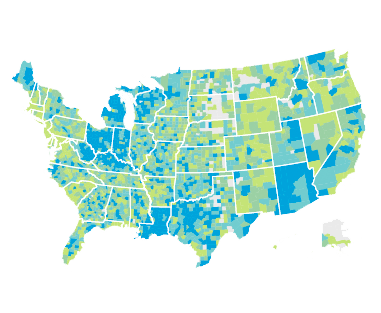发现
- 去找1Gas spending and the savings associated with gas price declines varied dramatically among U.S. 个人.
- 去找2人 in the South and Midwest spent more on gas and saw larger increases in disposable income when gas prices declined relative to those on the East and West coasts.
- 去找3Savings at the gas pump represented more than 1% of monthly income for low-income 个人 and disproportionately impacted younger Americans.
- 去找4Individuals spent roughly 80% of their savings from lower gas prices.
下载
The US government projects that American households will save on average $700 this year on gasoline, as the price of a gallon of gas has fallen by nearly $1.50 from its peak of $3.70 in April 2014 and is projected to remain low through 2015. But who feels the biggest increase in spending power? How much of that extra money do 消费者s spend, what do they spend it on?
直到现在, the answer to that question has come from surveys or estimates based on aggregate data and has indicated that less than half of the money saved at the pump was spent. 然而, this report by 12bet官方 研究所 shows that 个人 are spending roughly 80% of that extra money. With lower gas prices expected to last through the year, this extra disposable income is fueling 消费者 spending on categories other than gas.
我们的数据, drawn from 57 million 追逐 regular debit and credit card customers illuminated the effects declining gas prices had across the US. These four findings cover gas spending and savings, geographic location, age and income level, 消费者 spending.
找到一个: Gas spending and the savings associated with gas price declines varied dramatically among U.S. 个人.
Median Americans spent on average $101 per month on gas between December 2013 and February 2014 when gas prices were high. 高-gas spenders (the top 20% of gas spenders) spent $359 per month on gas using their credit and debit cards, more than triple the typical American, low-gas spenders (the bottom 20% of gas spenders) spent only $2 per month, less than 2% of the typical American.
一年后, when gas prices hit their low point, the average American saved $22 per month on gas, but there was significant variation among 个人. Twenty-three percent of the population decreased their gas spending by 50% or more, 16% increased their gas spending by 50% or more.
发现二: 人 in the South and Midwest spent more on gas and saw larger increases in disposable income when gas prices declined relative to those on the East and West coasts.
人 in the South and Midwest spent more on gas and saw larger increases in disposable income when gas prices declined relative to those on the East and West coasts. In the Midwest and South, “higher-impact states,” people saw the largest percentage declines in gas prices and gas spending as a fraction of income. In the East and West, “lower-impact states,” people saw smaller drops in gas prices and gas spending as a fraction of income. 最初, people in higher-impact states typically paid lower gas prices and consumed more gas than people in lower-impact states.

发现三: Savings at the gas pump represented more than 1% of monthly income for low-income 个人 and disproportionately impacted younger Americans.
Although gas spending was highest among men, 30-49 year-olds, high-income earners, spending on gas represented a larger share of income for men, 18-29 year-olds and low-income earners than for other 个人 as a whole
Increase in Purchasing Power from Drop in Gas 支出
值得注意的是, the recent low point in gas prices in January of 2015 yielded gas savings that represented 1.1% of monthly income for low-income 个人, equivalent to 1.6% of monthly income when projecting total gas spending and not just credit and debit card transactions.
发现四: Individuals spent roughly 80% of their savings from lower gas prices.
Individuals spent roughly 80% of their savings from lower gas prices. For every dollar less spent at the gas pump, 个人 spent roughly 80 cents (72 - 89 cents) on other things. Almost 20% of the gas savings were spent at restaurants, but department stores, entertainment and electronics and appliances also saw significant gains.
Data
From a universe of over 57 million anonymized debit and credit card account holders nationwide, we created samples of 25 million regular card users and 1 million core 追逐 customers.
Drawing from a universe of over 57 million anonymized customers, we created samples of 25 million regular debit and credit card holders and 1 million core 追逐 customers to shed new light on the effects of gas price decreases on 消费者 spending. We examined spending behavior as prices dropped 45% to their recent trough in January 2015 to determine who experienced the biggest increase in spending power, how much money they spent, what they bought. Answers to these questions are good indicators of what we can expect going forward if gas prices remain at these lower levels, 作为预测.
结论
We conclude that people are spending their savings from the pump to a greater extent than previously thought, that the recent gas price declines are fueling growth in personal consumption in nongas categories. This boost to 消费者s spending could be here to stay and even strengthen with time if gas prices remain low or continue to decrease as predicted. On the other hand, a substantial increase in gas prices might proportionately dampen 消费者 spend. We present evidence that the gains in discretionary spending from lower gas prices disproportionately accrue to low-income 个人, 年轻人, the Midwest and South, where people tend to spend more on gas. These regional and demographic differences are important inputs as policy makers consider gas tax reforms. Notwithstanding the environmental and infrastructure impacts from increased gas consumption, lower gas prices are good news for the U.S. 消费者.


